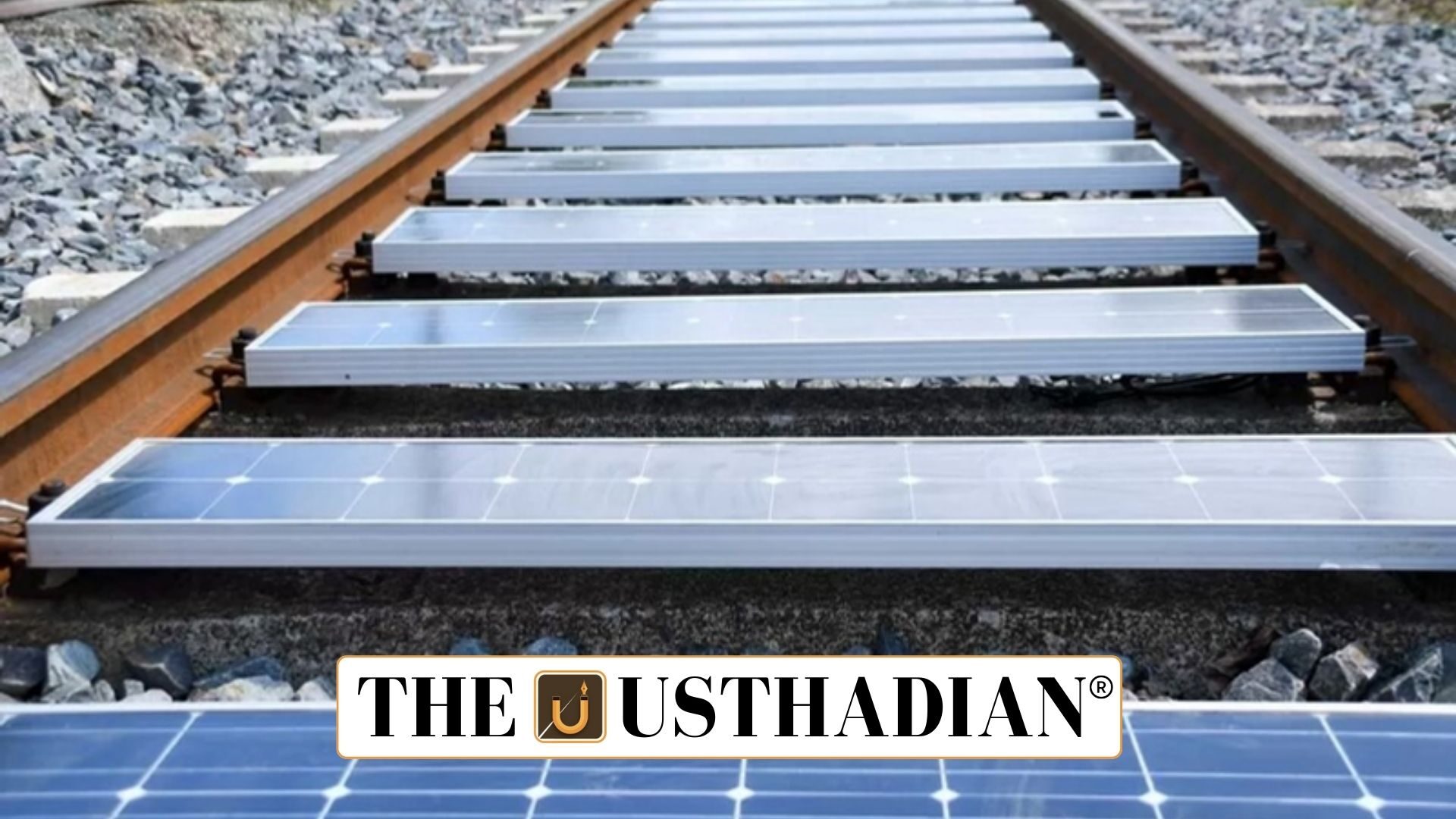Solar innovation at BLW Varanasi
Indian Railways Advances with Solar Panels and Electrification: On August 19, 2025, Indian Railways commissioned the first removable solar panel system between tracks at Banaras Locomotive Works (BLW), Varanasi. The project involves a 70-metre stretch with 28 solar panels producing 15 kWp of clean energy.
The unique removable design allows easy maintenance without disrupting railway operations. This step aligns with the Ministry of Railways’ larger green energy push and its goal to achieve net zero carbon emissions by 2030.
Static GK fact: BLW Varanasi, earlier known as Diesel Locomotive Works, was renamed in 2020 and is one of the largest locomotive production units in India.
Features of the solar project
The project is designed to integrate renewable energy into operational corridors. By installing panels between tracks, it uses otherwise idle space efficiently. The system is expected to cut electricity bills and serve as a pilot model for future expansion across India.
Static GK Tip: Indian Railways is the world’s fourth-largest railway network and one of the biggest electricity consumers in the country.
Freight network expansion in Gujarat
On August 10, 2025, Indian Railways expanded its freight capacity with a new logistics service. The first industrial salt rake was dispatched from Sanosara (Bhuj–Naliya section) to Dahej, carrying 3,851.2 tonnes across 673.57 km.
This operation earned ₹31.69 lakh, marking a new chapter for Gujarat’s salt industry. By opening this cost-effective trade corridor, Indian Railways strengthens its role in boosting regional industries.
Static GK fact: India is the third-largest salt producer in the world after China and the USA.
Electrification breakthrough in Madhya Pradesh
In another milestone, Western Railway commissioned India’s first 2×25 kV Electric Traction System at the Nagda–Khachrod section in Madhya Pradesh.
The system uses two Scott-connected 100 MVA transformers, a technology implemented for the first time in India. It improves efficiency by reducing transmission losses and providing better power supply to Overhead Equipment (OHE).
This upgrade supports the government’s focus on 100% electrification of railway routes and reducing dependency on fossil fuels.
Static GK Tip: The first electric train in India ran between Bombay Victoria Terminus and Kurla in 1925.
Towards a sustainable railway future
With solar energy adoption, new freight corridors, and advanced electrification systems, Indian Railways is positioning itself as a leader in sustainable transport. These projects highlight India’s commitment to green infrastructure and its role in supporting economic growth through innovation.
Static Usthadian Current Affairs Table
Indian Railways Advances with Solar Panels and Electrification:
| Topic | Detail |
| Solar panel project | First removable solar panel system between tracks at BLW Varanasi |
| Commissioning date | August 19, 2025 |
| Capacity | 15 kWp with 28 panels |
| Freight expansion | First industrial salt rake from Sanosara to Dahej |
| Freight quantity | 3,851.2 tonnes |
| Freight earnings | ₹31.69 lakh |
| Electrification | First 2×25 kV Electric Traction System at Nagda–Khachrod |
| Technology | Scott-connected 100 MVA transformers |
| Static GK | BLW earlier called Diesel Locomotive Works |
| Static GK | India is world’s third-largest salt producer |








